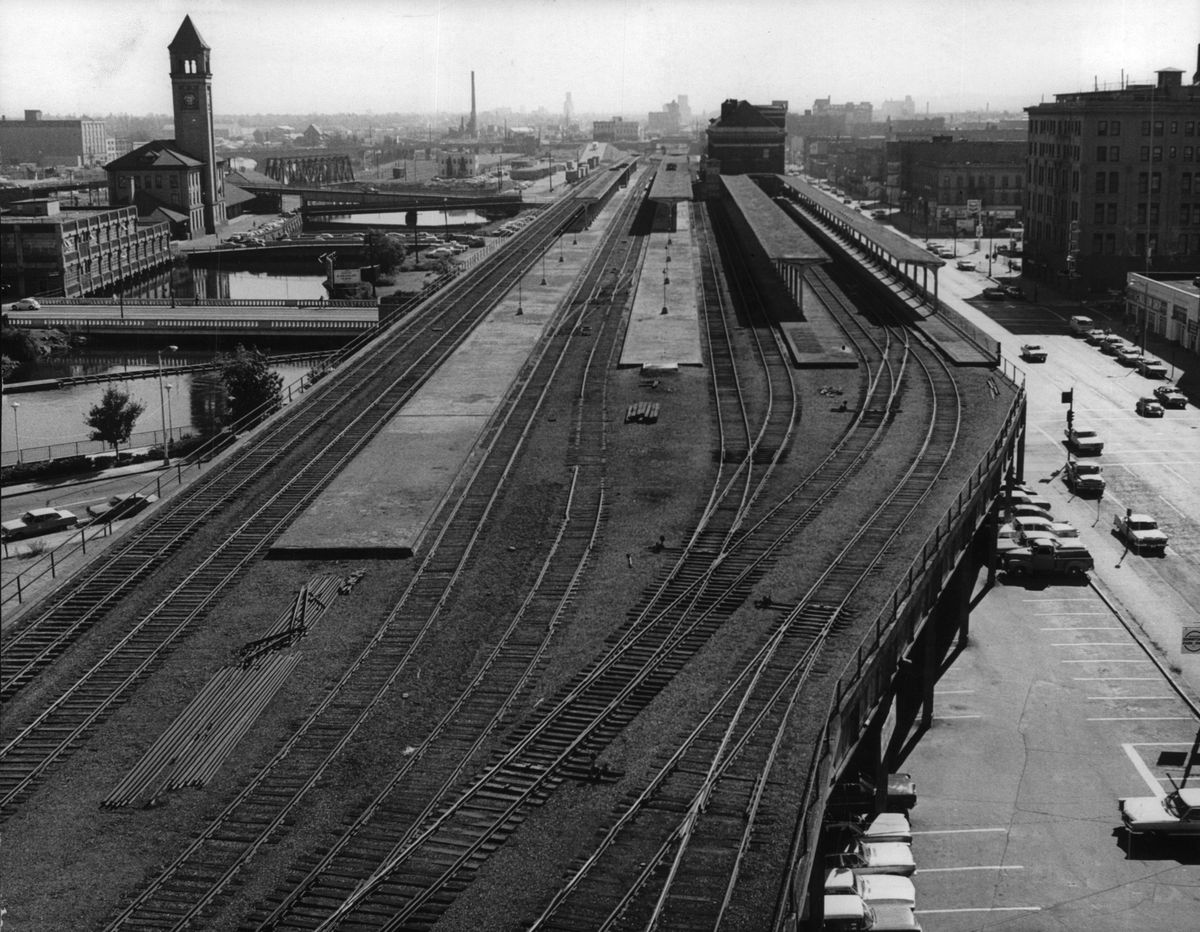Then and Now: Union Station trestle

The 1894 Spokane City Hall at Howard and Front streets symbolized the optimism and grand dreams of a railroad boomtown. It cost $165,000 to erect the elegant brick structure where the Looff Carrousel now sits. The twin-spired, brick-and-stone structure echoes the fanciful style of the Spokane County Courthouse and Review Tower.
At the dawn of the 20th century, there were multiple railroads trying to catch up to the Northern Pacific, the first transcontinental line that connected through Spokane in 1883.
James J. Hill, president of the Great Northern, chose Havermale Island as the site for his depot, accessed by bridges over the Spokane River. The depot, with its brick clocktower which still stands today, was opened in 1902. Each new connection made Spokane more important in the movement of freight and passengers.
In the heyday of rail construction, the business-minded city fathers agreed to sell city hall to backers of the Union Pacific and Milwaukee Road. The city hastily built a plain but solid building across the street in 1913, which served the city for almost 70 years.
To avoid traffic conflicts, rail traffic to the new Union Station arrived on a trestle which dominated Front Street, which is now Spokane Falls Boulevard.
The shadowy space under the trestle allowed auto traffic to move, was used for storage and, after putting up tarp walls, for exhibition space for conventions and fairs.
By the 1960s, rail traffic had dropped off and city boosters planning for a World’s Fair set their sights on the train depots and the giant trestle. What if they could remove the rails and make the area into a park setting? The idea seemed impossible.
After years of delicate negotiations, public pressure and land trades, the railroads agreed to move. The agreement to consolidate traffic onto the Northern Pacific corridor coincided with the merger of the Great Northern, the Northern Pacific and two other companies to become the Burlington Northern in 1970.
Few tears were shed when the wrecking ball took down the trestle, but there was an unsuccessful campaign to save the depot buildings. Of the extensive rail infrastructure of that era, only the clocktower of the GN station remains.